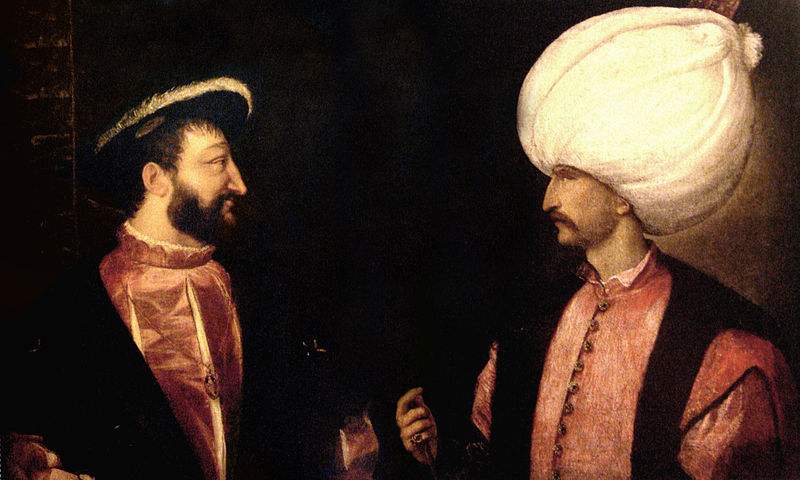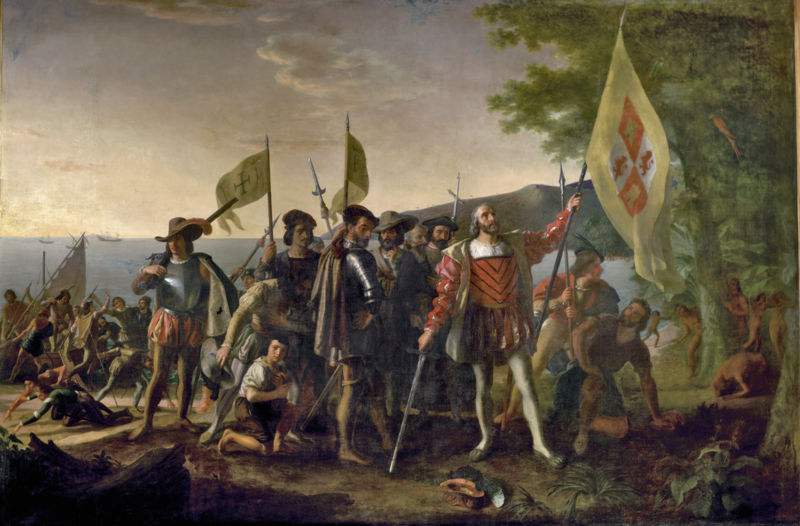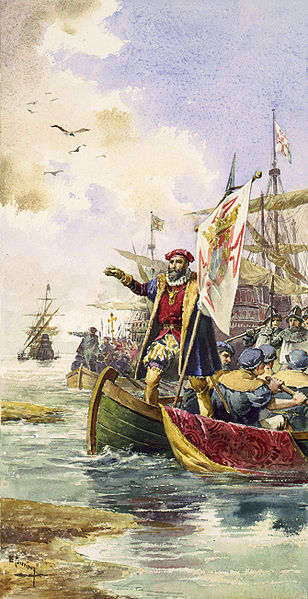II. Foundation of Christian states in the East;
III. First destruction of the Christian states (1144-87);
IV. Attempts to restore the Christian states and the crusade against Saint-Jean d’Acre (1192-98);
V. The crusade against Constantinople (1204);
VI. The thirteenth-century crusades (1217-52);
VII. Final loss of the Christian colonies of the East (1254-91);
VIII. The fourteenth-century crusade and the Ottoman invasion;
IX. The crusade in the fifteenth century;
X. MODIFICATIONS AND SURVIVAL OF THE IDEA OF THE CRUSADE
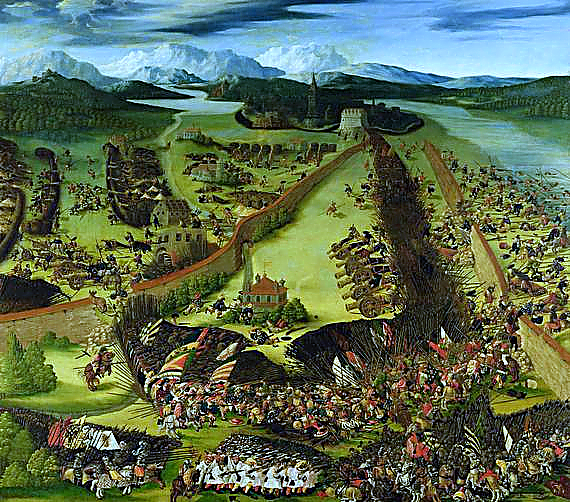
Battle of Pavia 1525, the decisive military engagement of the war in Italy between Francis I of France and the Habsburg emperor Charles V, in which the French army of 28,000 was virtually annihilated and Francis himself, commanding the French army, was taken prisoner. Francis was sent to Madrid, where, the following year, he concluded peace and surrendered French claims to Italy.
From the sixteenth century European policy was swayed exclusively by state interests; hence to statesmen the idea of a crusade seemed antiquated. Egypt and Jerusalem having been conquered by Sultan Selim, in 1517, Pope Leo X made a supreme effort to re-establish the peace essential to the organization of a crusade. The King of France and Emperor Charles V promised their co-operation; the King of Portugal was to besiege Constantinople with 300 ships, and the pope himself was to conduct the expedition. Just at this time trouble broke out between Francis I and Charles V; these plans therefore failed completely. The leaders of the Reformation were unfavourable to the crusade, and Luther declared that it was a sin to make war upon the Turks because God had made them His instruments in punishing the sins of His people. Therefore, although the idea of the crusade was not wholly lost sight of, it took a new form and adapted itself to the new conditions. The Conquistadores, who ever since the fifteenth century had been going forth to discover new lands, considered themselves the auxiliaries of the crusade. The Infante Don Henrique, Vasco da Gama, Christopher Columbus, and Albuquerque wore the cross on their breast and, when seeking the means of doubling Africa or of reaching Asia by routes from the East, thought of attacking the Mohammedans in the rear; besides, they calculated on the alliance of a fabulous sovereign said to be a Christian, Prester John.
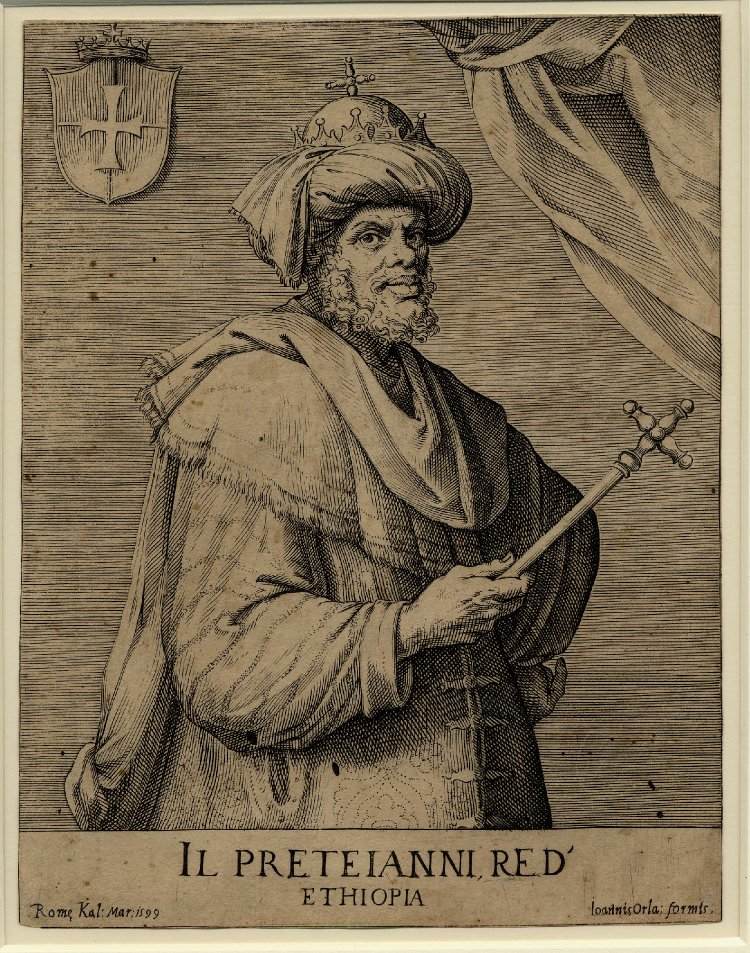
Prester John, King of Ethiopia. Prester John was reportedly a descendant of one of the Three Magi, said to be a generous ruler and a virtuous man, presiding over a realm full of riches and strange creatures, in which the Patriarch of The Saint Thomas Christians resided.
The popes, moreover, strongly encouraged these expeditions. On the other hand, among the Powers of Europe the House of Austria, which was mistress of Hungary, where it was directly threatened by the Turks, and which had supreme control of the Mediterranean, realized that it would be to its advantage to maintain a certain interest in the crusade. Until the end of the seventeenth century, when a diet of the German princes was held at Ratisbon, the question of war against the Turks was frequently agitated, and Luther himself, modifying his first opinion, exhorted the German nobility to defend Christendom (1528-29). The war in Hungary always partook of the character of a crusade and, on different occasions, the French nobles enlisted under the imperial banner. Thus the Duke of Mercoeur was authorized by Henry IV to enter the Hungarian service. In 1664 Louis XIV, eager to extend his influence in Europe, sent the emperor a contingent which, under the command of the Count of Coligny, repulsed the Turks in the battle of St. Gothard. But such demonstrations were of no importance because, from the time of Francis I, the kings of France, to maintain the balance of power in Europe against the House of Austria, had not hesitated to enter into treaties of alliance with the Turks. When, in 1683, Kara Mustapha advanced on Vienna with 30,000 Turks or Tatars, Louis XIV made no move, and it was to John Sobieski, King of Poland, that the emperor owed his safety. This was the supreme effort made by the Turks in the West. Overwhelmed by the victories of Prince Eugene at the close of the seventeenth century, they became thenceforth a passive power.
On the Mediterranean, Genoa and Venice beheld their commercial monopoly destroyed in the sixteenth century by the discovery of new continents and of new water-routes to the Indies, while their political power was absorbed by the House of Austria. Without allowing the crusaders to deter them from their continental enterprises, the Hapsburgs dreamed of gaining control of the Mediterranean by checking the Barbary pirates and arresting the progress of the Turks. When, in 1571, the Island of Cyprus was threatened by the Ottomans, who cruelly massacred the garrisons of Famagusta and Nicosia, these towns having surrendered on stipulated terms, Pope Pius V succeeded in forming a league of maritime powers against Sultan Selim, and secured the co-operation of Philip II by granting him the right to tithes for the crusade, while he himself equipped some galleys. On 7 October, 1571, a Christian fleet of 200 galleys, carrying 50,000 men under the command of Don Juan of Austria, met the Ottoman fleet in the Straits of Lepanto, destroyed it completely, and liberated thousands of Christians. This expedition was in the nature of a crusade. The pope, considering that the victory had saved Christendom, by way of commemorating it instituted the feast of the Holy Rosary, which is celebrated on the first Sunday of October. But the allies pushed their advantages no further.
When, in the seventeenth century, France superseded Spain as the great Mediterranean power, she strove, despite the treaties that bound her to the Turks, to defend the last remnants of Christian power in the East. In 1669 Louis XIV sent the Duke of Beaufort with a fleet of 7000 men to the defence of Candia, a Venetian province, but, notwithstanding some brilliant sallies, he succeeded in putting off its capture for a few weeks only. However, the diplomatic action of the kings of France in regard to Eastern Christians who were Turkish subjects was more efficacious. The regime of “Capitulations”, established under Francis I in 1536, renewed under Louis XIV in 1673, and Louis XV in 1740, ensured Catholics religious freedom and the jurisdiction of the French ambassador at Constantinople; all Western pilgrims were allowed access to Jerusalem and to the Holy Sepulchre, which was confided to the care of the Friars Minor. Such was the modus vivendi finally established between Christendom and the Mohammedan world.
Notwithstanding these changes it may be said that, until the seventeenth century, the imagination of Western Christendom was still haunted by the idea of the Crusades. Even the least chimerical of statesmen, such as Père Joseph de Tremblay, the confidential friend of Richelieu, at times cherished such hopes, while the plan set forth in the memorial which Leibniz addressed (1672) to Louis XIV on the conquest of Egypt was that of a regular crusade. Lastly, there remained as the respectable relic of a glorious past the Order of the Knights of St. John of Jerusalem, which was founded in the eleventh century and continued to exist until the French Revolution. Despite the valiant efforts of their grand master, Villiers de l’Isle Adam, the Turks had driven them from Rhodes in 1522, and they had taken refuge in Italy. In 1530 Charles V presented them with the Isle of Malta, admirably situated from a strategic point of view, whence they might exercise surveillance over the Mediterranean. They were obliged to promise to give up Malta on the recovery of Rhodes, and also to make war upon the Barbary pirates. In 1565 the Knights of Malta withstood a furious attack by the Turks. They also maintained a squadron able to put to flight the Barbary pirates. Recruited from among the younger sons of the noblest families of Europe, they owned immense estates in France as well as in Italy, and when the French Revolution broke out, the order quickly lost ground. The property it held in France was confiscated in 1790, and when, in 1798, the Directory undertook an expedition to Egypt, Bonaparte, in passing, seized the Isle of Malta, whose knights had themselves under the protection of the Czar, Paul I. The city of Valetta surrendered at the first summons, and the order disbanded; however, in 1826 it was reorganized in Rome as a charitable association.
The history of the Crusades is therefore intimately connected with that of the popes and the Church. These Holy Wars were essentially a papal enterprise. The idea of quelling all dissensions among Christians, of uniting them under the same standard and sending them forth against the Mohammedans, was conceived in the eleventh century, that is to say, at a time when there were as yet no organized states in Europe, and when the pope was the only potentate in a position to know and understand the common interests of Christendom. At this time the Turks threatened to invade Europe, and the Byzantine Empire seemed unable to withstand the enemies by whom it was surrounded. Urban II then took advantage of the veneration in which the holy places were held by the Christians of the West and entreated the latter to direct their combined forces against the Mohammedans and, by a bold attack, check their progress. The result of this effort was the establishment of the Christian states in Syria.
While the authority of the popes remained undisputed in Europe, they were in a position to furnish these Christian colonies the help they required; but when this authority was shaken by dissensions between the priesthood and the empire, the crusading army lost the unity of command so essential to success. The maritime powers of Italy, whose assistance was indispensable to the Christian armies, thought only of using the Crusades for political and economic ends. Other princes, first the Hohenstaufen and afterwards Charles of Anjou, followed this precedent, the crusade of 1204 being the first open rebellion against the pontifical will. Finally, when, at the close of the Middle Ages, all idea of the Christian monarchy had been definitively cast aside, when state policy was the sole influence that actuated the Powers of Europe, the crusade seemed a respectable but troublesome survival. In the fifteenth century Europe permitted the Turks to seize Constantinople, and princes were far less concerned about their departure for the East than about finding a way out of the fulfilment of their vow as crusaders without losing the good opinion of the public. Thereafter all attempts at a crusade partook of the nature of political schemes.
Notwithstanding their final overthrow, the Crusades hold a very important place in the history of the world. Essentially the work of the popes, these Holy Wars first of all helped to strengthen pontifical authority; they afforded the popes an opportunity to interfere in the wars between Christian princes, while the temporal and spiritual privileges which they conferred upon crusaders virtually made the latter their subjects. At the same time this was the principal reason why so many civil rulers refused to join the Crusades. It must be said that the advantages thus acquired by the popes were for the common safety of Christendom. From the outset the Crusades were defensive wars and checked the advance of the Mohammedans who, for two centuries, concentrated their forces in a struggle against the Christian settlements in Syria; hence Europe is largely indebted to the Crusades for the maintenance of its independence. Besides, the Crusades brought about results of which the popes had never dreamed, and which were perhaps the most, important of all.
They re-established traffic between the East and West, which, after having been suspended for several centuries, was then resumed with even greater energy; they were the means of bringing from the depths of their respective provinces and introducing into the most civilized Asiatic countries Western knights, to whom a new world was thus revealed, and who returned to their native land filled with novel ideas; they were instrumental in extending the commerce of the Indies, of which the Italian cities long held the monopoly, and the products of which transformed the material life of the West. Moreover, as early as the end of the twelfth century, the development of general culture in the West was the direct result of these Holy Wars. Finally, it is with the Crusades that we must couple the origin of the geographical explorations made by Marco Polo and Orderic of Pordenone, the Italians who brought to Europe the knowledge of continental Asia and China. At a still later date, it was the spirit of the true crusader that animated Christopher Columbus when he undertook his perilous voyage to the then unknown America, and Vasco de Gama when he set out in quest of India. If, indeed, the Christian civilization of Europe has become universal culture, in the highest sense, the glory redounds, in no small measure, to the Crusades.
LOUIS BRÉHIER (Catholic Encyclopedia)
Links to the previous Crusader Series
Part I: Origin of the Crusades
Part II: Foundation of Christian states in the East;
Part III: First destruction of the Christian states (1144-87);
Part V: The crusade against Constantinople (1204);
Part VI: The thirteenth-century crusades (1217-52);
Part VII: Final Loss of the Christian Colonies of the East (1254-91)
Part VIII: The Fourteenth Century Crusade and the Ottoman Invasion


